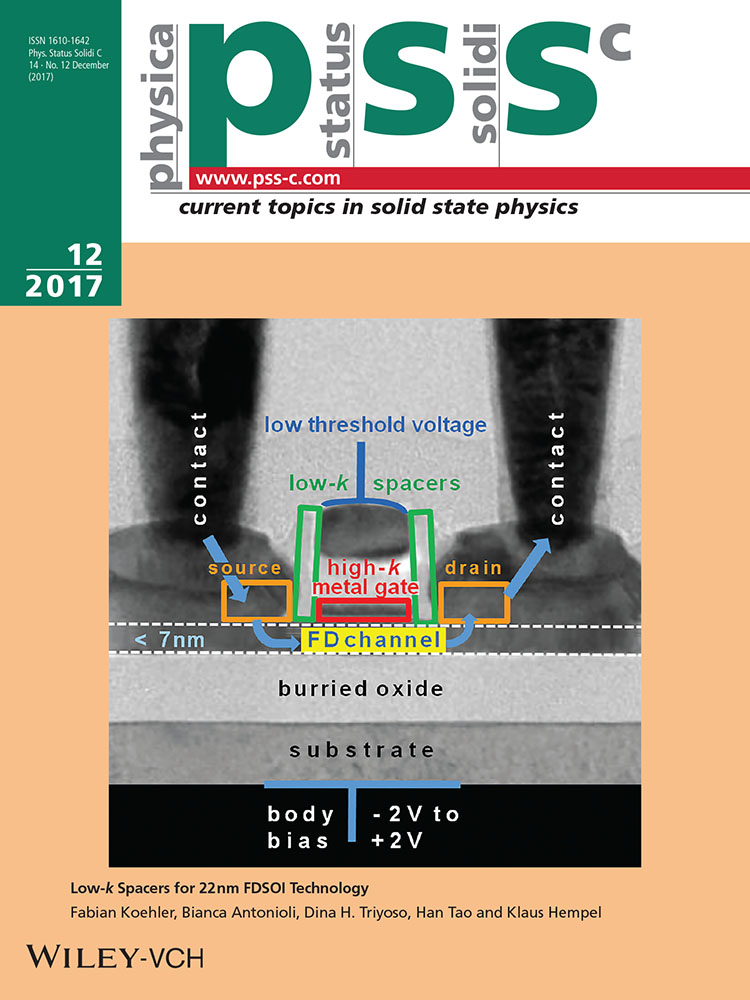Depth profile of thermal donors in NTDCZSi
Abstract
The depth profile of thermal donors (TDs) produced by annealing neutron transmutation-doped Czochralski silicon (NTDCZSi) at high temperatures above 1000 °C first and then at 450 °C has been studied by means of the thermal conversion spreading resistance (TCSR). The concentration of the TDs increases with the distance from the surface of the sample, and its depth profile can be described by the error function when the annealing temperature is low or the annealing time is short. A peak is formed in the depth profile under the annealing condition of 1100 °C for 4 h. Combining with an infrared absorption study, it is found that the curves of the diffusivity coincide with the loss of interstitial oxygen. These results indicate that the distribution of the TDs depends on both the out-diffusion and the precipitation of oxygen. Neutron irradiation accelerates the out-diffusion of the oxygen in the surface region of the silicon and the oxygen precipitation in the bulk.




